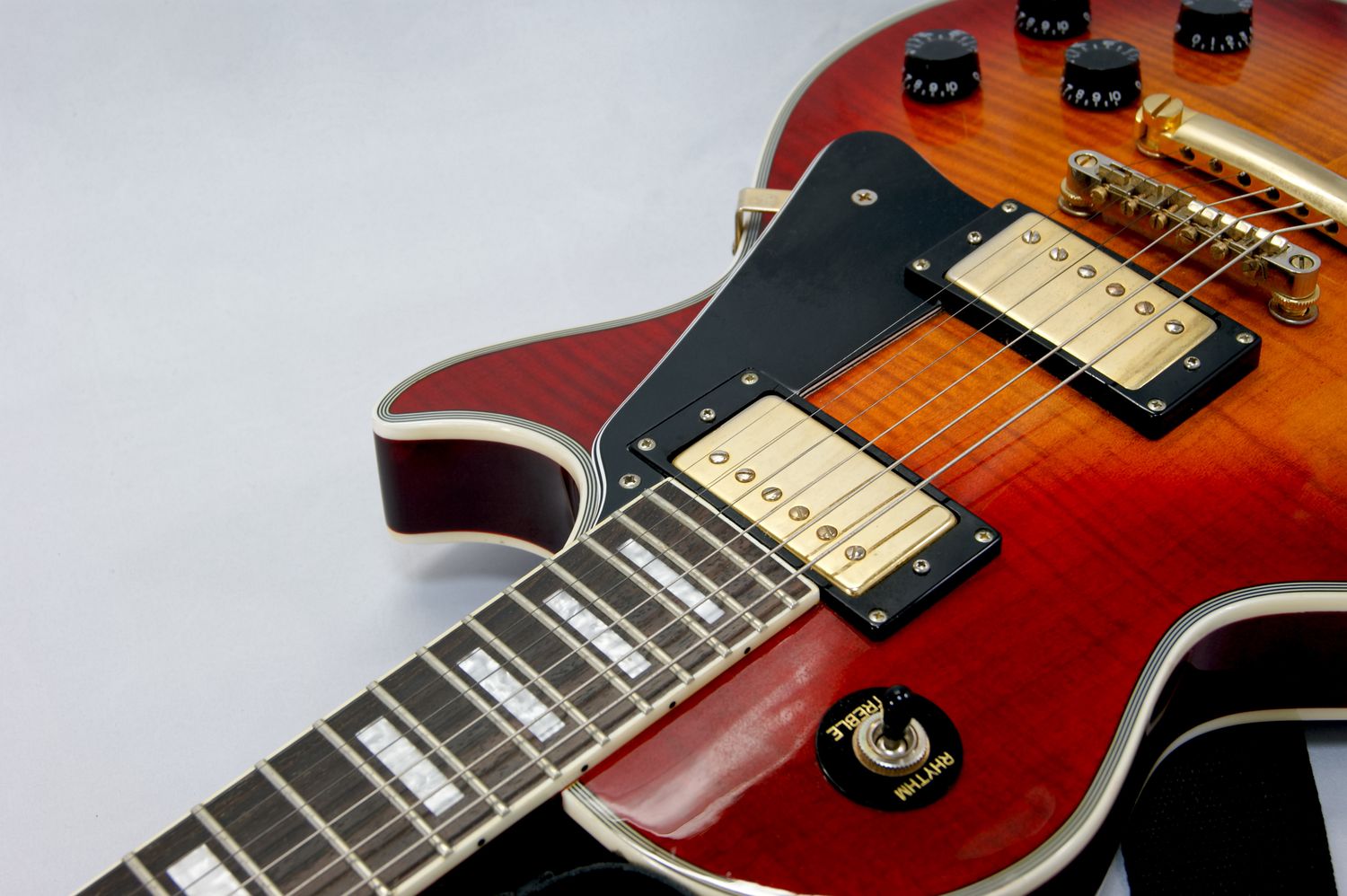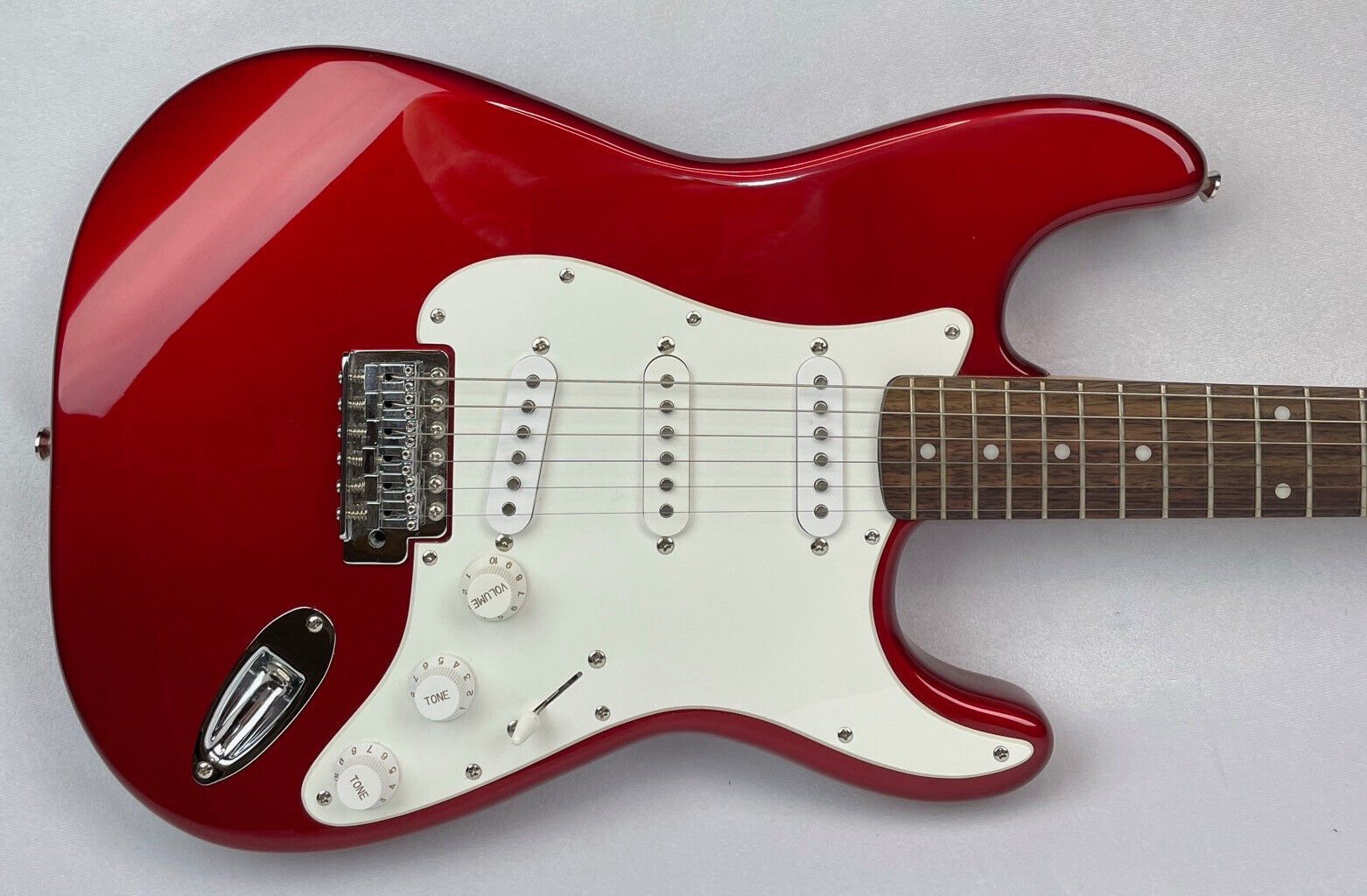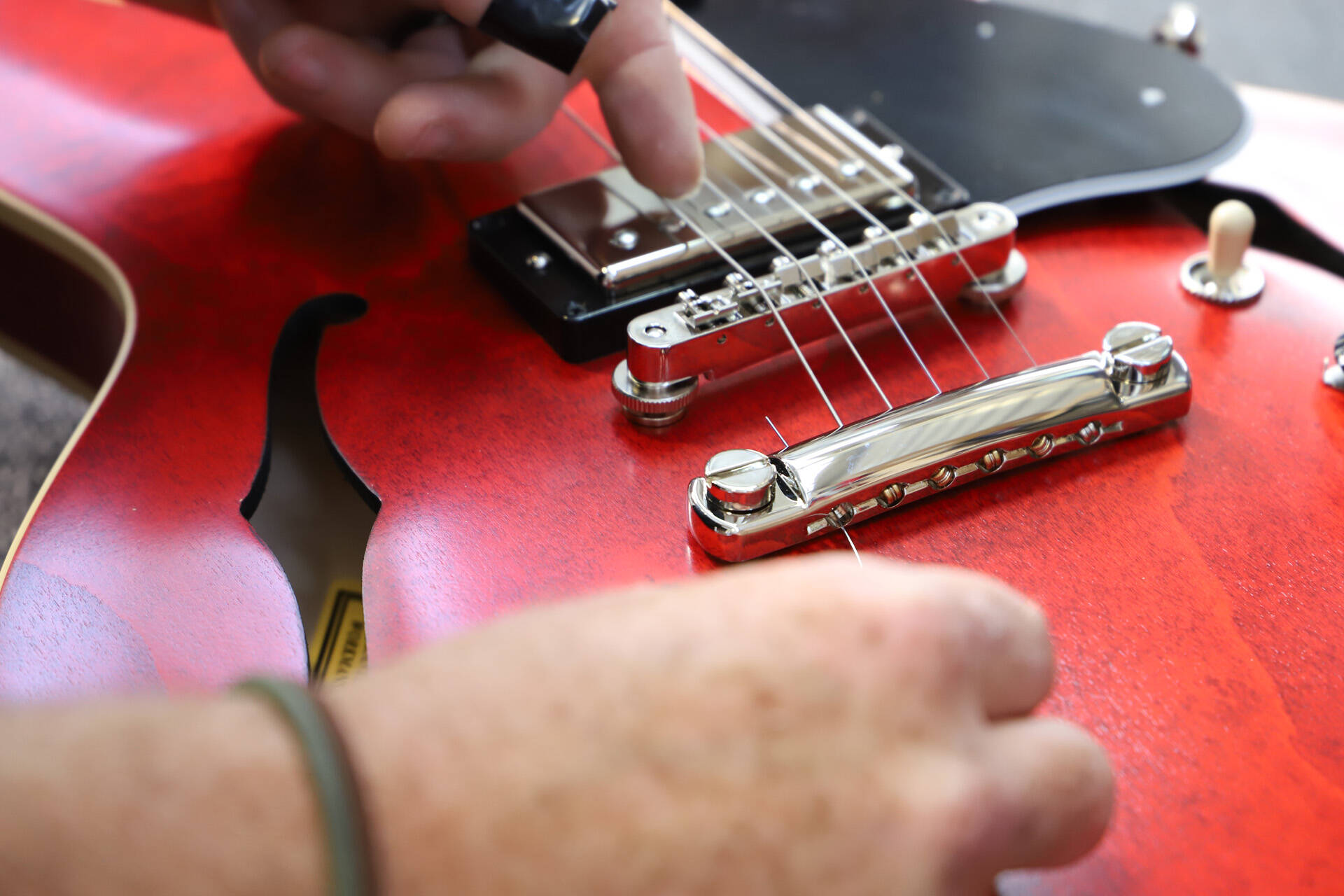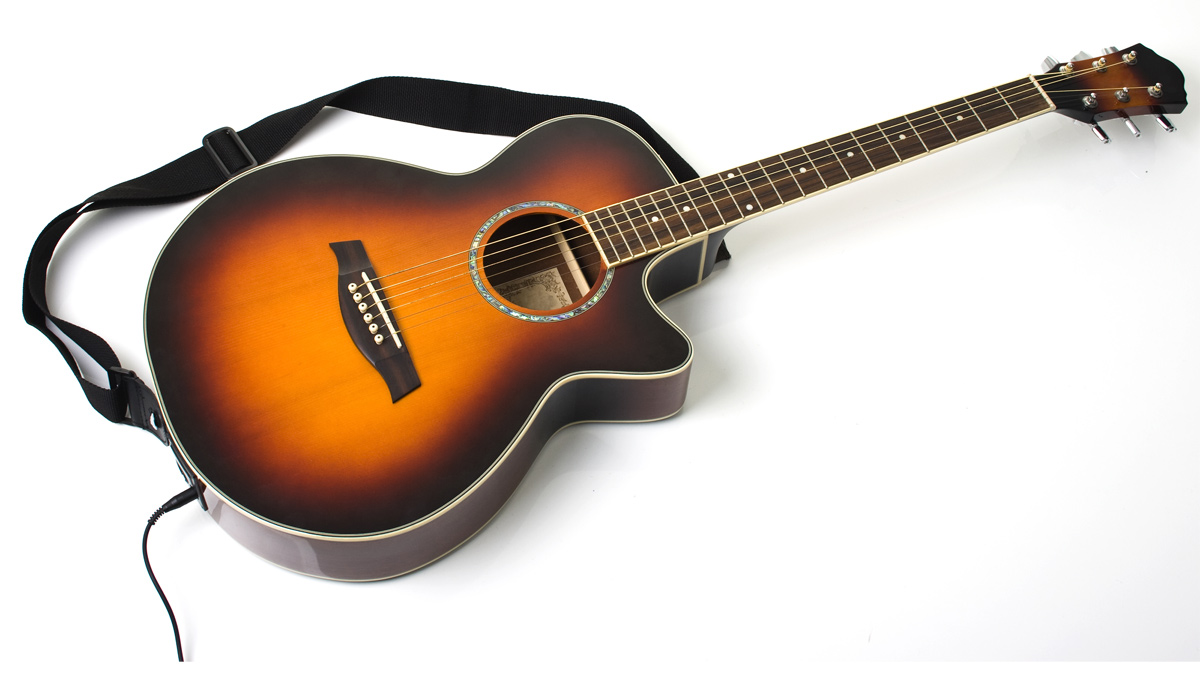Home>Instruments>Guitar>How Does An Electric Guitar Work


Guitar
How Does An Electric Guitar Work
Published: February 12, 2024
Discover how electric guitars work and the intricate mechanics behind creating their iconic sound. Explore the inner workings of guitars and gain a deeper understanding of their functionality. Unlock the secrets of the guitar's unique electrical system and its impact on music.
(Many of the links in this article redirect to a specific reviewed product. Your purchase of these products through affiliate links helps to generate commission for AudioLover.com, at no extra cost. Learn more)
Table of Contents
Introduction
Introduction
Welcome to the fascinating world of electric guitars! These iconic instruments have revolutionized music, shaping the sounds of countless genres and captivating audiences worldwide. Whether you’re a seasoned musician, an aspiring guitarist, or simply curious about the inner workings of these mesmerizing instruments, this article will delve into the captivating realm of electric guitars.
Electric guitars are marvels of engineering and artistry, blending technological innovation with musical expression. Understanding how these instruments function opens a doorway to a realm of creativity and sonic exploration. From the intricate components that form their anatomy to the electrifying process that brings them to life, every aspect of electric guitars contributes to their enchanting allure.
As we embark on this journey, we’ll unravel the mysteries behind the components that make up an electric guitar, explore the role of electricity in powering these instruments, and uncover the magic that transpires when sound is born from the vibrations of steel strings. By the end of this exploration, you’ll have a newfound appreciation for the craftsmanship and ingenuity that define electric guitars and the remarkable symphony they enable musicians to create.
Components of an Electric Guitar
Components of an Electric Guitar
Before we delve into the inner workings of electric guitars, it’s essential to familiarize ourselves with their fundamental components. Each part plays a crucial role in shaping the instrument’s sound and functionality, contributing to its unique character and playability.
1. Body: The body of an electric guitar serves as its core structure, providing a platform for the other components to integrate. It is typically crafted from various types of wood, such as mahogany, alder, maple, or basswood, each imparting distinct tonal qualities to the instrument.
2. Neck: Attached to the body, the neck of the guitar houses the fretboard and frets, facilitating the guitarist’s interaction with the instrument. Necks are commonly made from maple, mahogany, or other tonewoods, and they come in various shapes and profiles to accommodate different playing styles.
3. Headstock: Located at the end of the neck, the headstock is where the tuning pegs or machine heads are mounted. These pegs allow the guitarist to adjust the tension of the strings, thereby tuning the instrument to the desired pitches.
4. Pickups: Positioned beneath the strings, pickups are electromagnetic devices that capture the vibrations of the strings and convert them into electrical signals. These signals are then sent to an amplifier, where they are transformed into audible sound waves.
5. Bridge: Situated near the base of the body, the bridge anchors the strings and determines their length and height. It plays a pivotal role in transmitting the string vibrations to the guitar’s body, influencing the overall resonance and sustain of the instrument.
6. Electronics: Electric guitars feature an array of electronic components, including tone and volume controls, as well as pickup selectors. These elements empower the guitarist to sculpt the instrument’s tonal characteristics and tailor its sound to suit diverse musical styles.
7. Strings: The strings of an electric guitar are vital contributors to its sonic identity. Typically made of steel or nickel, these taut wires are responsible for producing the vibrations that ultimately generate the instrument’s sound.
Understanding the role of each component is crucial in comprehending how an electric guitar functions as a cohesive unit. These elements synergize to form an instrument that transcends its individual parts, becoming a conduit for artistic expression and sonic innovation.
The Function of Each Component
The Function of Each Component
As we unravel the inner workings of an electric guitar, it’s essential to grasp the distinct functions of each component and how they collectively contribute to the instrument’s sonic prowess. Delving into the roles of these elements sheds light on the intricate interplay that culminates in the creation of captivating music.
1. Body: The body of an electric guitar serves as the resonant chamber that amplifies the vibrations of the strings, thereby influencing the instrument’s tonal character and sustain. Different body shapes and wood types yield varying tonal profiles, shaping the overall sound of the guitar.
2. Neck: The neck of the guitar provides structural support for the fretboard and frets, facilitating the guitarist’s ability to fret notes and chords. Its design and construction significantly influence the instrument’s playability, with factors such as neck profile and scale length impacting the overall feel and comfort of the guitar.
3. Headstock: The headstock houses the tuning pegs, enabling the guitarist to adjust the tension of the strings and tune the instrument to the desired pitches. Its design can also contribute to the guitar’s aesthetic appeal, with various headstock shapes reflecting different visual styles.
4. Pickups: Positioned beneath the strings, pickups capture the string vibrations and convert them into electrical signals. These signals are then transmitted to an amplifier, where they are transformed into audible sound. The type and placement of pickups greatly influence the guitar’s tonal characteristics, with single-coil and humbucker pickups offering distinct sonic profiles.
5. Bridge: The bridge anchors the strings and determines their length and height, influencing their tension and intonation. It plays a pivotal role in transmitting the string vibrations to the guitar’s body, affecting resonance, sustain, and overall playability.
6. Electronics: The electronic components, including tone and volume controls, empower the guitarist to shape the instrument’s sound. Pickup selectors allow for the activation of different pickups or pickup combinations, offering a versatile array of tonal options to suit diverse playing styles and musical genres.
7. Strings: The strings are the source of the guitar’s sound, producing vibrations that are captured by the pickups and transformed into electrical signals. The material, gauge, and tension of the strings significantly influence the instrument’s playability, tonal characteristics, and overall responsiveness.
Understanding the functions of these components provides valuable insight into the intricate synergy that underpins the electric guitar’s sonic palette. Each element contributes a unique sonic footprint, culminating in an instrument that transcends its physical form, becoming a conduit for artistic expression and musical innovation.
The Role of Electricity
The Role of Electricity
At the heart of an electric guitar’s operation lies the transformative power of electricity. This invisible force serves as the catalyst that propels the instrument from silent repose to resonant vitality, imbuing it with the ability to convey the nuances of musical expression. Understanding the role of electricity in this context unveils the enchanting marriage of technology and artistry that defines the electric guitar.
When a guitarist plucks a string on an electric guitar, the resulting vibrations are captured by the instrument’s pickups, which consist of wire coils wrapped around magnetic pole pieces. These coils create a magnetic field that interacts with the moving steel or nickel strings, inducing electrical currents within the coils. This phenomenon, known as electromagnetic induction, is the fundamental principle behind the conversion of string vibrations into electrical signals.
Once the vibrations are transmuted into electrical signals, they embark on a transformative journey through the guitar’s circuitry. These signals travel through the tone and volume controls, where their timbral characteristics and intensity can be sculpted to suit the guitarist’s sonic preferences. The pickup selector switch allows for the activation of different pickups or combinations thereof, further expanding the tonal palette available to the guitarist.
From the guitar’s output jack, the electrical signals embark on a voyage through the instrument cable, traversing the air with the velocity of electrons in motion. Upon reaching the amplifier, these signals are greeted by a realm of sonic metamorphosis, where they undergo amplification, tonal shaping, and spatial enhancement. The amplifier’s speakers breathe life into the electrical signals, transmuting them into tangible sound waves that reverberate through the air, captivating the ears and stirring the soul.
Electricity serves as the ethereal conduit through which the guitarist’s intentions and emotions are transmuted into audible expressions. It bestows the electric guitar with the ability to project a vast spectrum of tonal colors, from crystalline cleans to searing overdriven textures, each imbued with the guitarist’s artistic fingerprint.
Understanding the pivotal role of electricity in this process illuminates the symbiotic relationship between the instrument, the guitarist, and the intangible forces that converge to give rise to captivating music. It underscores the enchanting fusion of science and art that animates the electric guitar, transforming it from a mere assembly of components into a vessel of sonic enchantment.
Sound Production
Sound Production
Sound production in an electric guitar is a captivating symphony of physics, technology, and artistry, culminating in the creation of evocative musical expressions. From the initial pluck of a string to the resounding waves that permeate the air, the journey of sound production is a mesmerizing testament to the ingenuity and creativity embodied by the instrument.
When a guitarist plucks a string, it sets off a chain reaction of events that lead to the generation of sound. The vibrating string induces fluctuations in the magnetic field of the pickups, resulting in the generation of electrical signals. These signals, imbued with the nuances of the string’s vibrations, embark on a transformative odyssey through the guitar’s circuitry.
As the electrical signals traverse the guitar’s electronics, they encounter tone and volume controls that allow for the sculpting of their timbral characteristics and intensity. The pickup selector switch enables the activation of different pickups or combinations thereof, expanding the sonic palette available to the guitarist. This intricate interplay of circuitry empowers the guitarist to shape the instrument’s voice, crafting tones that resonate with emotive depth and sonic richness.
Upon exiting the guitar via the output jack, the electrical signals embark on a voyage through the instrument cable, carrying with them the essence of the guitarist’s touch and intention. Upon reaching the amplifier, these signals undergo a metamorphosis, as they are amplified, shaped, and imbued with spatial depth. The amplifier’s speakers breathe life into the electrical signals, transmuting them into tangible sound waves that reverberate through the air, enveloping the listener in a sonic tapestry.
The resulting sound is a testament to the collaborative dance of artistry and technology, where the guitarist’s creativity and the instrument’s capabilities converge to produce an evocative sonic landscape. From the crystalline purity of clean tones to the searing intensity of overdriven textures, the electric guitar’s sonic repertoire is as diverse as the imaginations of those who wield it.
Sound production in an electric guitar transcends mere mechanics; it embodies the essence of human expression, encapsulating the subtleties of emotion and the boundless possibilities of musical storytelling. It is a testament to the profound marriage of science and art, where the intangible realm of sound converges with the tangible world, giving rise to the captivating melodies and harmonies that resonate in the hearts of listeners.
Conclusion
Conclusion
The electric guitar stands as a testament to the harmonious fusion of artistry, technology, and human creativity. From its meticulously crafted components to the transformative power of electricity that animates its voice, this iconic instrument embodies the boundless possibilities of musical expression. As we’ve delved into its inner workings, we’ve unveiled the captivating symphony that unfolds with each pluck of a string, each twist of a knob, and each surge of electrical current.
Every component of the electric guitar, from the resonant body to the magnetic pickups, plays a pivotal role in shaping its sonic identity. The body resonates with the vibrations of the strings, while the pickups capture these vibrations and transmute them into electrical signals, embarking on a transformative journey through the guitar’s circuitry. The result is a kaleidoscope of tonal possibilities, each imbued with the guitarist’s touch and intention.
The role of electricity in this process is nothing short of alchemy, as it breathes life into the instrument, empowering it to convey the depths of human emotion through sound. From the invisible dance of electrons to the resounding waves that permeate the air, electricity serves as the ethereal conduit through which the guitarist’s musical narrative unfolds.
Sound production in an electric guitar is a testament to the profound marriage of science and art, where the intangible realm of sound converges with the tangible world, giving rise to captivating melodies and harmonies that resonate in the hearts of listeners. It embodies the essence of human expression, encapsulating the subtleties of emotion and the boundless possibilities of musical storytelling.
As we conclude this exploration, it’s evident that the electric guitar transcends its physical form, becoming a vessel for artistic expression and sonic innovation. Its allure lies not only in its captivating sound but also in the boundless creativity it inspires. Whether in the hands of a seasoned virtuoso or an aspiring musician, the electric guitar remains a timeless symbol of musical enchantment, inviting players to embark on a sonic odyssey filled with limitless potential and expressive depth.
May the symphony of the electric guitar continue to captivate and inspire, resonating in the hearts and minds of music lovers for generations to come.











